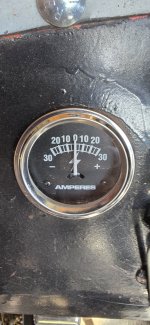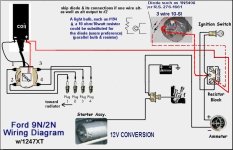deanostoybox
Member
First thing I see is the jumper wire should be same gauge as power from battery and the alternator wire as it will see the full charging current.here's what I have
That has nothing to do with why it won't start. Guessing you have a pertronix unit in there as the distributor cover does not have a hump for a condenser. Black wire from pertronix unit should go to negative terminal on coil. power from ignition switch should go to positive terminal on coil as well as red wire from pertronix unit. If that is how you have it wired it should work.
If it is wired as I have described and no spark then troubleshooting begins








